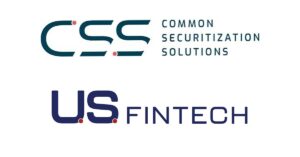The mortgage industry has experienced a remarkable digital transformation over the past decade. Today, due in large part to the COVID-19 pandemic, consumers are increasingly turning to digital channels to research, buy and refinance their homes.
This digital acceleration has impacted the application-to-closing process with advancements such as e-signatures and e-closing. It also has transformed and elevated the role of online search, a typical path for borrowers to start their purchase journey. When you consider that a sizable share of borrowers select a new lender when it’s time for a new home loan — roughly 80% go a different direction when refinancing, according to Black Knight — the importance of having an effective, organic search strategy to drive client acquisition can’t be emphasized enough.
Location-based or proximity-based online searches are one tool for attracting clients digitally. Mortgage originators with physical locations that don’t have an optimized local-search strategy are missing an opportunity to generate leads virtually for free — an advantage that can’t be enjoyed by their digital lending counterparts.
Marketing advantage
People who are refinancing or relocating to buy a home are now turning to online searches instead of friends for recommendations on the right home loan. Organic “near me” searches through Google, Yelp, map applications and other programs are no longer reserved for the restaurant and retail industries.
In fact, mobile queries for the unbranded search term “bank near me” grew by a remarkable 89% in the two-year period ending in July 2020. The pandemic added fuel to this trend by driving housebound consumers to start nearly every type of purchase with an online search.
This digital acceleration, driven by the COVID-19 crisis, changed mortgage client acquisitions in the blink of an eye. It has made the mortgage landscape even more fiercely competitive for retail originators in an environment already being disrupted by consumer-direct lenders. But the growing significance of organic search in the path to purchase also has brought to light an important digital-marketing advantage for traditional banks and mortgage companies with branch networks.
When done right, the local search or proximity search optimization process can provide traditional brick-and-mortar banks and mortgage lenders with a digital-marketing advantage over digital-only mortgage giants without physical branch locations. Proximity search optimization is the process by which mortgage banks and companies with branch networks (and other multi-location businesses) seek to improve how they rank on search engines that pinpoint the user’s location to suggest nearby businesses. The key to success with proximity search optimization is to ensure the lender’s or broker’s brand is visible locally when nearby consumers conduct relevant searches.

Optimizing performance
Having a bank’s branch locations show up in “near me” searches is not pure luck. Performance against five controllable factors — whether they are actively managed or not — can determine whether an originator’s brand shows up when a consumer searches for a new home loan.
How the local bank or mortgage company branches show up is directly connected to how well their local digital presence is managed. But many lenders fail to fully optimize their digital presence based on their proximity to millions of nearby borrowers. Five signals that can determine rank are:
- Accuracy of local listings information and consistency across all networks
- Local profile completeness with all applicable fields filled out on each discovery network
- High rating score and responsiveness to reviews
- Frequency of posts on local social media and ideal keyword density
- Local branch page alignment with Google’s assessment of quality
With proximity search optimization, bank and mortgage lender brands seek to show up in the “local pack” or “map pack,” often the first results consumers see when searching for nearby businesses. The local pack or map pack displayed by Google, Bing, map applications and other search engines shows the local businesses related to the searcher’s query whenever that query has local intent.
For example, if a person types “lender near me,” Google will show three local businesses that might answer the query. Appearing in one of the top three positions garners significantly more clicks and clients than those that rank lower. In lending, the opportunity is sizable, with tens of millions of unbranded mortgage and banking-related searches that result in a Google 3-Pack each year.
The right tools can help originators maintain visibility with online reviews, keep a pulse on borrower sentiment and enable quick response to protect brand reputation.
Maintaining visibility
It is common knowledge that poor online consumer ratings can have a serious impact on business success. Businesses with three-star reviews receive 15% fewer click-throughs than those with four stars, while 80% of shoppers say they’ve changed their mind about a purchase based solely on negative online reviews.
Beyond being an important source of purchase consideration, online reviews are an increasingly important signal for optimizing proximity search results. For example, research shows that responding to even positive reviews creates value in optimizing proximity search results. The right tools can help originators maintain visibility with online reviews, keep a pulse on borrower sentiment and enable quick response to protect brand reputation.
Because organic search is a nearly ubiquitous starting point for the mortgage borrower journey, it is surprising that even major lenders could be doing much more to optimize their search strategies. A recent analysis by MomentFeed of the 10 largest U.S. consumer banking and mortgage institutions found some major blind spots in their efforts to capture would-be clients searching nearby for mortgages and other bank services.
The findings suggest that these lenders generally do a good job of maintaining complete location profiles. But they struggle to control their data accuracy, engage with reviews and use social media, such as location-specific Facebook pages, as tools to improve their proximity search performance.
These lenders had relatively unimpressive consumer ratings, earning three out of five stars on average. Their response rates were generally poor, with only 21% of all reviews receiving replies and only 11% of negative reviews generating a response within a 24-hour time frame. Several lenders didn’t respond at all.
Clearly, proximity search optimization is less advanced in retail lending than other industries, such as restaurants and retail, and is ripe for disruption. Mortgage companies should see this as a significant opportunity, as any financial institution able to do even an acceptable job of optimizing their proximity search strategy will dominate the competition.
● ● ●
The Mortgage Bankers Association is predicting downward pressure in 2021 and a shift to purchase loans, which means an increasingly competitive client-acquisition environment. Lenders and originators need to be prepared.
Proximity search is not merely a solution tailored for today’s refinance-driven mortgage landscape. It’s a digital investment in all phases of the cyclical mortgage market. Instead of leaving money on the table, mortgage originators should view their proximity search optimization strategy as a significant opportunity to dominate consumer-direct rivals, both now and as the market continues to change. ●
Author
-
Nick Hedges is CEO of MomentFeed, and is a 20-year veteran of the internet and software-as-a-service industry. Hedges joined MomentFeed after serving as senior vice president at Ellie Mae, the leading cloud-based mortgage platform provider. Previously, Hedges was president and CEO of Velocify, the leading consumer-sales acceleration platform for mortgages and other financial services. He helped orchestrate the successful sale of Velocify to Ellie Mae in 2017. Reach Hedges at nhedges@momentfeed.com.
View all posts






